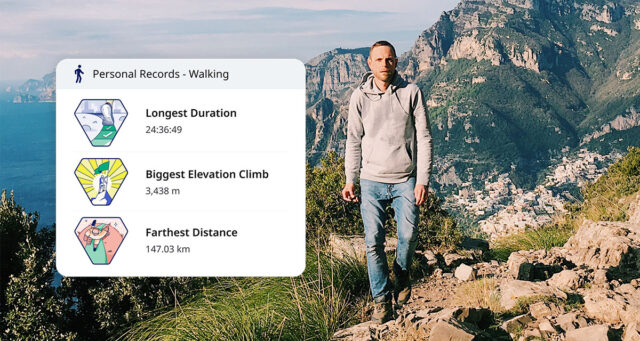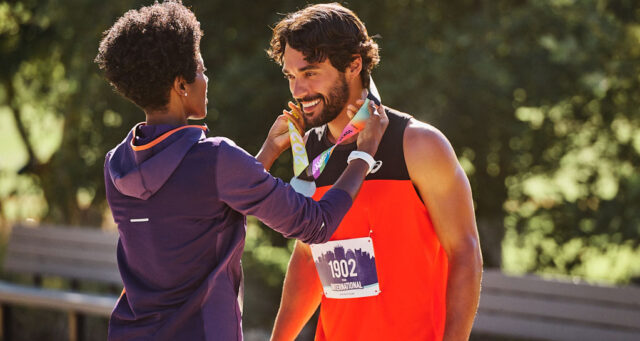If you’re about to train for your first big race and feel ready to bust out of the gate, hold it! One of the biggest mistakes runners make when training for long distances for the first time is doing their easy and long runs too fast. (I speak from experience.) There are many reasons why this hurts your training—from increasing your risk of injury to depriving yourself of the recovery needed for optimal performance.
If you expect to run your race at the same pace you train at, don’t be surprised if you find yourself fatigued on race day and possibly finish out even slower. Here’s how to make sure you’re training slow enough to reap the benefits of a relaxed run.
Keep your pace conversational
If you’re running with friends, do a self-check. Are you struggling to maintain a conversation? If so, slow down. And stop looking at your watch! Chances are, if you’re running with friends, it’s an easy run and not a workout, so just forget about the pace and enjoy your company.
Slow down by at least 45 seconds from your goal race pace
In the age of social media sharing, many people are averse to posting “slow” paces. With more than a decade of running under my belt, I’ve learned to check my ego at the virtual door. When I’m training for a goal half marathon, my pace is sometimes almost two minutes slower than my goal race pace. Last fall, I was training to break 1:40, which is a 7:35 per mile pace, and most of my easy and long runs hovered around 9:20 pace. Because of key workouts with a few consistent miles at my goal pace, I was confident about going after this goal on race day. And when race day came along, I raced consistently and beat my goal with 5 seconds to spare.
Monitor your heart rate, but do your research first
Heart rate training is popular, but it’s not a one-size-fits-all approach. Work with a coach or even a sports medicine doctor to figure out your individual target heart rate. When it comes to measuring, be mindful that many experts agree that wrist-based monitors may not be as accurate as chest straps—especially if you don’t wear them tight enough.
Just slow down in the heat
I’ve been back living in my hometown of Houston for nine years now, and I’ve accepted that summer running is going to be slower than our short fall and spring seasons, no matter how acclimated I may be. Trying to push the pace on easy runs or workouts can put you at risk for heat exhaustion and heat stroke, and at this point, I can say with confidence that it’s not really possible to train and recover “too slowly.” Perceived effort counts for more than you think!
While it can be tempting to go all-out every time you run, mastering the discipline and control of the easy run will make you stronger on race day.






